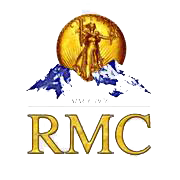Currency Grading
Currency grading is imperative as it helps collectors determine the value of their banknotes. United States banknotes are graded by a system much like the 70 points Sheldon coin grading scale which is used for coins. Top-quality grades include “Gem” or “Choice” condition which is usually dubbed as “New” by sellers down to “poor” for notes barely identifiable.
Paper money collectors agree that there are no standard means to grade. Paper money grading is not only necessary for determining whether a banknote is original or counterfeit, but it also determines the note’s value in the market.
Notes graded 20 to 64 are eligible for PMG’s EPQ designation if they meet the standards described below.
Notes must qualify for PMG’s Exceptional Paper Quality (EPQ) designation to be graded 65 and higher.
In addition to the 70-point numerical grading scale, PMG uses several designations to give an additional description to select notes. These designations are Exceptional Paper Quality (EPQ), the PMG Star (★) Designation and NET.
EPQ
An Exceptional Paper Quality (EPQ) note is, in the opinion of PMG graders, completely original. EPQ notes will not have been physically, chemically, or materially processed to give the appearance of a higher grade. Notes exhibiting normal wear-and-tear for their grade are eligible. All notes graded Very Fine 20 and higher will be evaluated for the EPQ designation. Notes must qualify for the EPQ designation to grade Gem Uncirculated 65 and higher. For additional details, click here.
PMG Star (★) Designation®
PMG assigns the PMG Star (★) Designation to notes with exceptional eye appeal for their assigned grade.
While eye appeal is one of the most subjective characteristics of notes, there are general standards which numismatists typically use to define exceptional eye appeal. To receive a from PMG, notes must exhibit exceptionally strong plate and / or overprint embossing, vibrant ink color, and pristine paper quality exceeding the well-established standards used to determine the Exceptional Paper Quality (EPQ) Designation.
All US and world notes are automatically evaluated for the distinction of the PMG Star (★) Designation. Notes that do not qualify for the EPQ Designation will be disqualified from receiving the Star Designation.
Notes graded PMG Gem Uncirculated 70 must also qualify for the PMG Star (★) and EPQ Designations.
NET
The NET designation indicates a note that has problems that are more severe than can be reflected by the note’s assigned numeric grade. If a note receives the NET designation, the severe problem or problems will be listed. The grade portion of the PMG Guarantee does not apply to Notes given a NET designation by PMG. Notes with the NET designation are guaranteed to be genuine only.
Definitions
Handling
Minor disturbances in the paper other than folds such as teller counting marks, crinkles and minor bends.
Original
Paper quality is as issued except for normal circulation.
Pedigree
A pedigree describes the current and/or past ownership of a note and PMG will list this pedigree by submitter request on the PMG certification label. PMG will pedigree notes to significant collectors or collections if sufficient documentation is provided. In addition, submitters may request to have their own name or their collection’s name listed on the PMG certification label, subject to PMG’s discretion. It is important to note that although some pedigrees to famous collectors or collections can be desirable and add value to certain notes, many pedigrees will not add any desirability or value to a note.
Registration
Alignment of the face and back printing.
